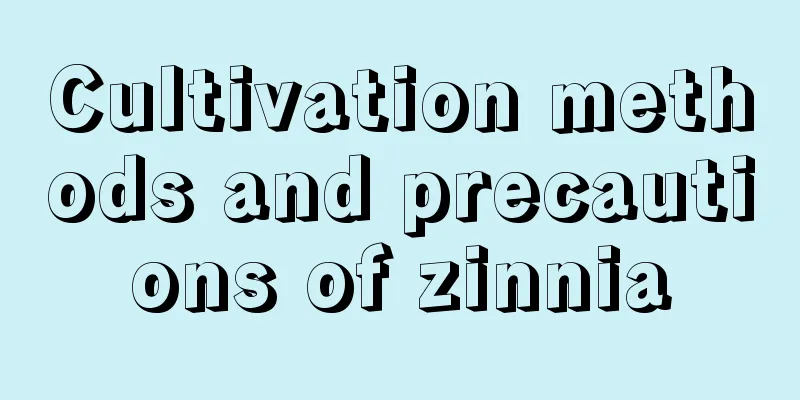Cultivation methods and precautions of zinnia

How to grow zinniaWater and fertilizer managementWatering: Due to the high light demand, water evaporates easily, so it is necessary to maintain proper humidity at all times. Water every day in summer. Fertilization: Apply 2-3 grams of compound fertilizer to the bottom of the pot when transplanting. After transplanting, use 800 times diluted dichlorodiphenyltrichloroethane to irrigate the roots for disinfection. The soil in the pot should be kept moist within 1 week after planting to promote the growth of surface roots. When the roots grow to the bottom of the pot, you can start applying fertilizer 2-3 times a week (apply water-fertilizer on sunny days, and control the concentration within 200mg/kg. Apply granular fertilizer 2-3 grams/pot on rainy days). You can also apply calcium fertilizer once. Temperature and lightTemperature: Zinnia prefers warm and sunny weather and cannot tolerate high temperatures and severe cold. The suitable temperature for its growth is 18-20℃ during the day and 15-16℃ at night. Growth is particularly rapid in summer. Lighting: Full sunlight can be used directly. If there is insufficient sunlight, the plant will easily grow too tall and its resistance will be weaker, and its flowering will also be affected. Things to note when raising zinniasPlant shapingIf zinnias are not topped, the plants will have too few side branches and few flowers. Proper topping can promote dwarfing of the plants and increase the number of flowers. When the seedlings grow to 4 leaves, transplant them and pinch the tops to promote the growth of lower branches to form a better plant shape. Start pinching the tops one week after transplanting, leaving 4 pairs of true leaves, and decide whether to pinch again depending on the growth and branching of the plant. During the flowering period, continue to add potassium dihydrogen phosphate and other phosphorus and potassium fertilizers to promote the continuous growth of flower heads. After the flowers wither, the dead flower heads should be cut off in time to reduce nutrient loss. Pest controlCommon diseases of zinnia: white star disease, black spot disease, mosaic disease Zinnias also need to be prevented from growing too tall. Zinnia seedlings are very prone to growing too tall during the growth period. Pay attention to lowering the weeds, pinching the tips, and watering less. |
<<: Maintenance methods of five-color plum in four seasons
>>: Evening primrose cultivation methods and precautions
Recommend
How to plant longan seeds in pots
1. Soak the kernels Clean the white soft tissue o...
The growing environment and local conditions of Magnolia officinalis
Magnolia officinalis growth environment and condi...
How to prune lantern flowers? The best time and method
Lantern flower pruning time Lantern flowers can b...
Is it better to use a large or small pot for lily of the valley?
Lily of the valley should use a large or small po...
How to make hydrangea bloom blue
Treatment The method introduced here does not req...
Cultivation methods and precautions of Huanghuai Cassia
1. Fertilizer During cultivation, yellow sophora ...
Is the small-leaved purple bougainvillea blooming frequently?
Bougainvillea small-leaf purple is a variety with...
How to propagate tulips, the main propagation methods of tulips
1. Seed propagation 1. Bulb storage: Tulips are b...
The breeding methods and precautions of Honghuiyan
1. Water Red Brilliant is relatively drought-resi...
What does the number of roses mean? Should I give 11 or 19?
1. What does the number of roses represent? Roses...
How to save the green basket when it wilts
1. Increase lighting Although the green radish is...
Watering time for Kalanchoe, what to do if leaves turn yellow due to excessive watering
1. Watering time It is important to choose the ri...
How to grow soybeans to achieve high yield?
Soybean, also known as soybean, is one of the com...
How to make Chinese cabbage mature quickly?
The cabbage is approaching the heart stage, which...
How to plant cycad seeds
Sand storage treatment The sand storage treatment...









